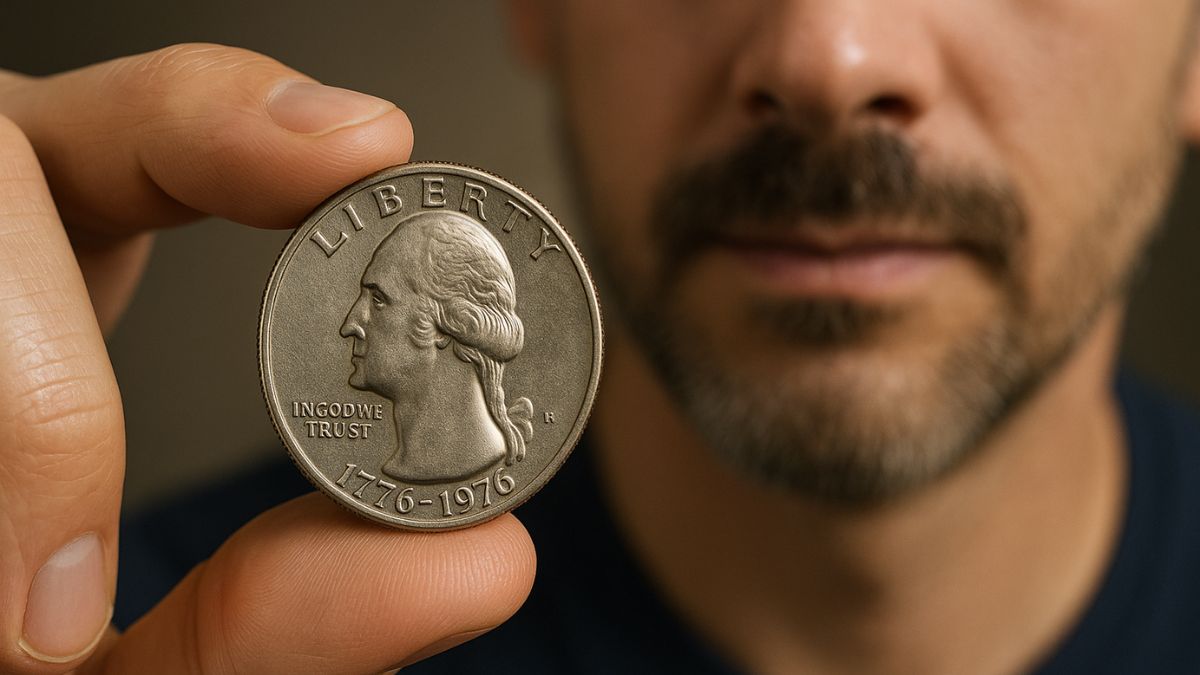The world of coin collecting is filled with surprises, where a seemingly ordinary coin can hold extraordinary value.
One such example is the 1976 Bicentennial Quarter, which has garnered attention for its staggering valuation of nearly $90 million.
This article delves into the details of this remarkable coin and explores other rare quarters that have fetched over $50 million.
The $90 Million Bicentennial Quarter
The 1976 Bicentennial Quarter was minted to commemorate the 200th anniversary of the United States’ independence.
While millions were produced, a unique specimen has stood out due to its exceptional characteristics:
- Minting Error: This particular coin exhibits a rare minting error, possibly a double strike or misalignment, making it one-of-a-kind.
- Pristine Condition: The coin has been preserved in near-perfect condition, significantly enhancing its value.
- Historical Significance: Being part of the bicentennial celebration adds to its allure among collectors.
These factors combined have led to its valuation approaching $90 million, making it one of the most valuable coins in existence.
Other Rare Quarters Worth Over $50 Million
Beyond the Bicentennial Quarter, several other quarters have achieved remarkable valuations due to their rarity, historical significance, and unique features.
1. 1796 Draped Bust Quarter
- Historical Importance: As the first quarter ever minted by the U.S., it holds immense historical value.
- Limited Mintage: Only 6,146 were produced, making it extremely rare.
- Estimated Value: Over $50 million in pristine condition.
2. 1932-D Washington Quarter
- First of Its Kind: Introduced to commemorate George Washington’s 200th birthday.
- Low Mintage: Approximately 436,800 were minted in Denver.
- Collector’s Favorite: Highly sought after, with values exceeding $50 million for top-grade specimens.
3. 1804 Draped Bust Quarter
- Rare Overdate Error: Features an 1804 date over a 1803 die, adding to its uniqueness.
- Scarcity: Very few are known to exist.
- Valuation: Estimated at over $50 million.
Comparative Table of Rare Quarters
| Quarter | Year | Key Features | Estimated Value |
|---|---|---|---|
| Bicentennial Quarter | 1976 | Minting error, pristine condition | ~$90 million |
| Draped Bust Quarter | 1796 | First U.S. quarter, limited mintage | $50 million |
| Washington Quarter | 1932-D | First Washington quarter, low mintage | $50 million |
| Draped Bust Quarter | 1804 | Overdate error, extreme rarity | $50 million |
Factors Influencing Coin Value
Several elements contribute to the high valuation of these coins:
- Rarity: Limited mintage or unique errors increase desirability.
- Condition: Coins in mint or near-mint condition fetch higher prices.
- Historical Significance: Coins associated with significant events or figures are more valuable.
- Collector Demand: High demand among collectors can drive up prices.
The discovery and valuation of rare quarters like the 1976 Bicentennial Quarter highlight the fascinating world of coin collecting.
These coins are not just currency but pieces of history, with stories and values that transcend their face value.
Whether you’re a seasoned collector or a curious enthusiast, the allure of uncovering such treasures continues to captivate imaginations worldwide.
FAQs
How can I determine if my quarter is valuable?
To assess the value of your quarter, examine its year, mint mark, and condition. Coins with minting errors, low mintage, or historical significance are typically more valuable. Consulting a professional coin appraiser or referencing a reputable coin value guide can provide more accurate information.
What makes the 1976 Bicentennial Quarter so special?
While many 1976 Bicentennial Quarters were minted, a particular specimen stands out due to a unique minting error and its pristine condition. These factors, combined with its historical significance, have led to its valuation nearing $90 million.
Where can I sell a rare quarter?
Rare quarters can be sold through various channels, including reputable coin dealers, auction houses, and online marketplaces specializing in numismatics. It’s advisable to have the coin appraised and authenticated before selling to ensure you receive its true value.

